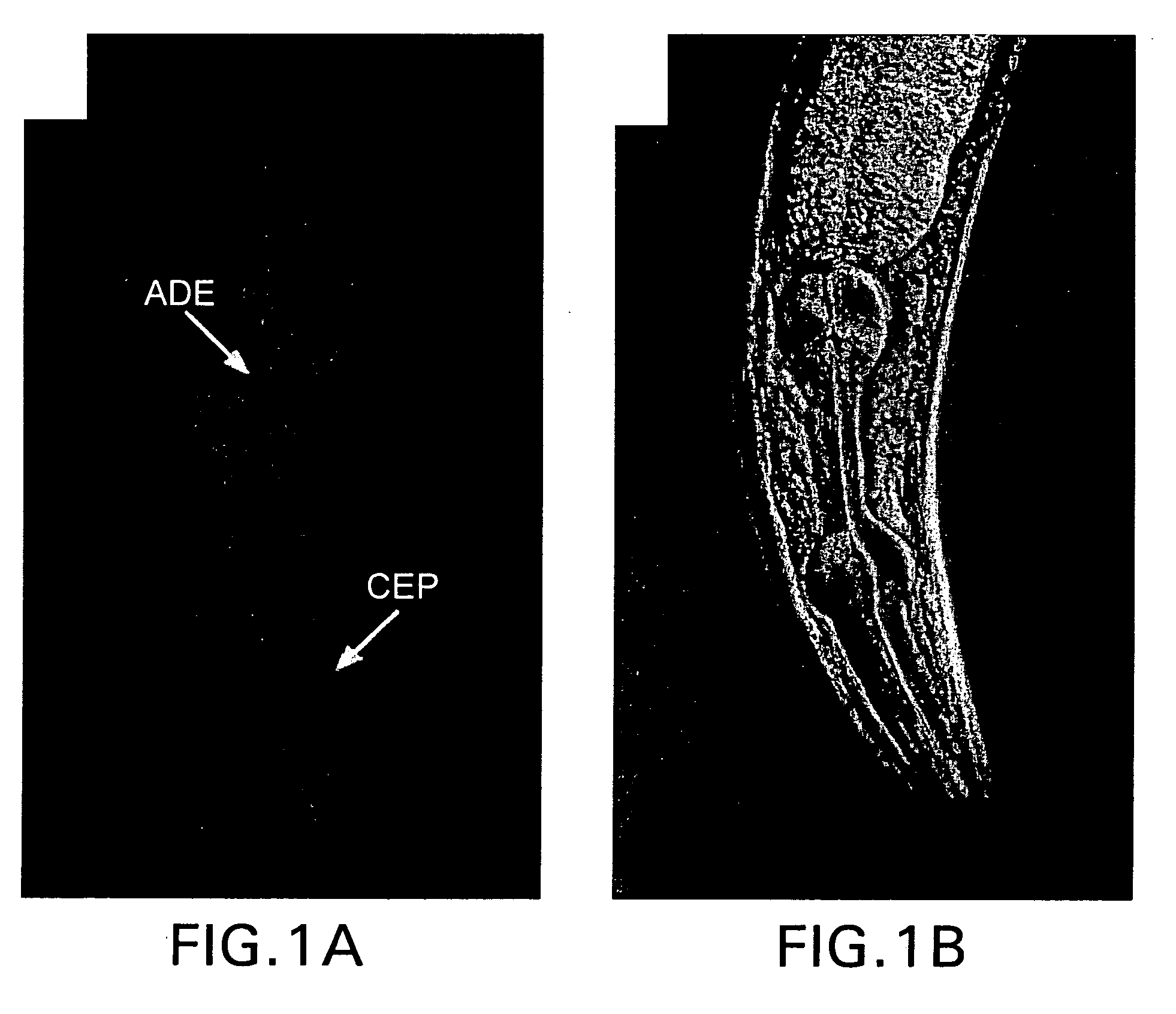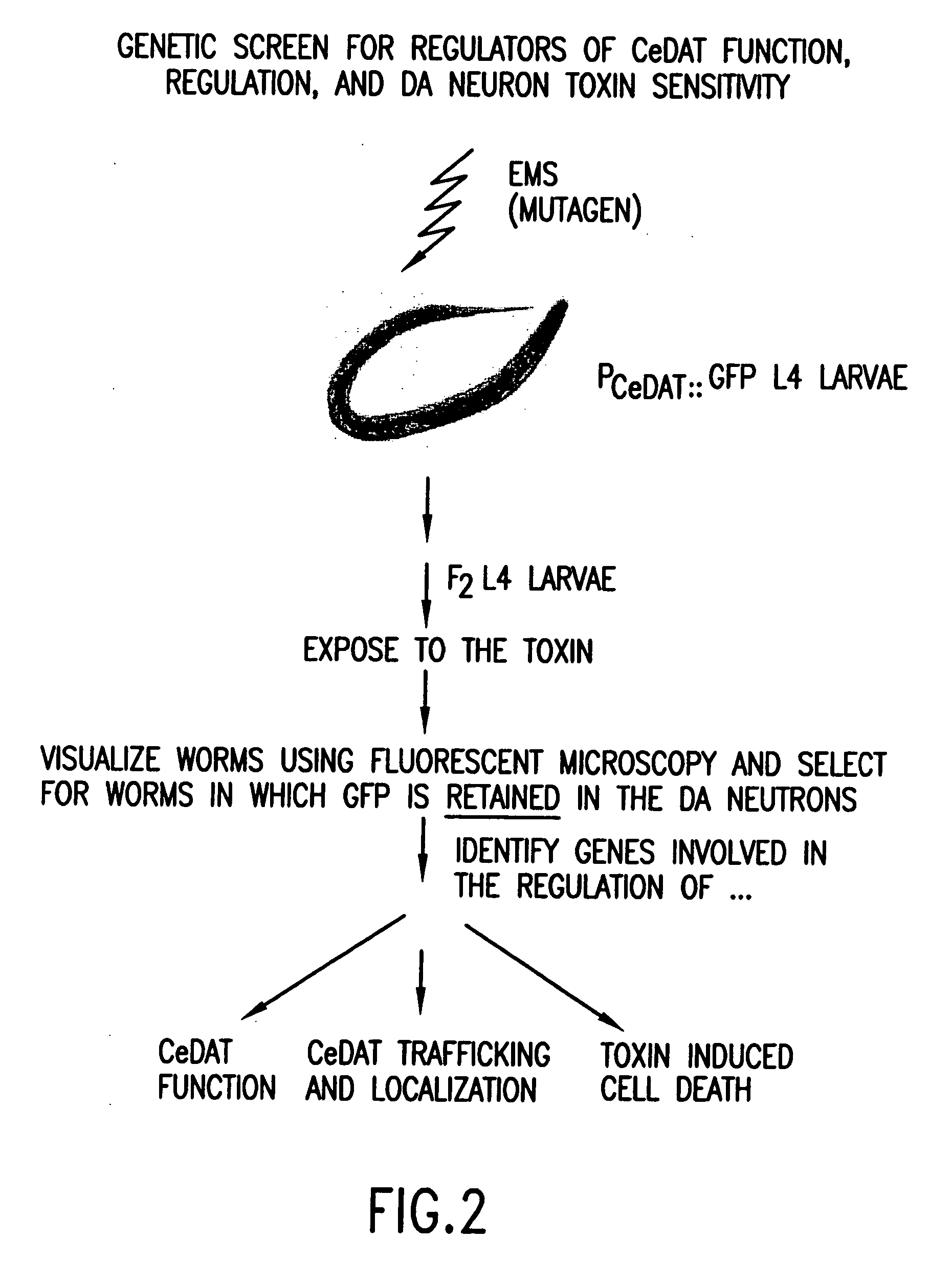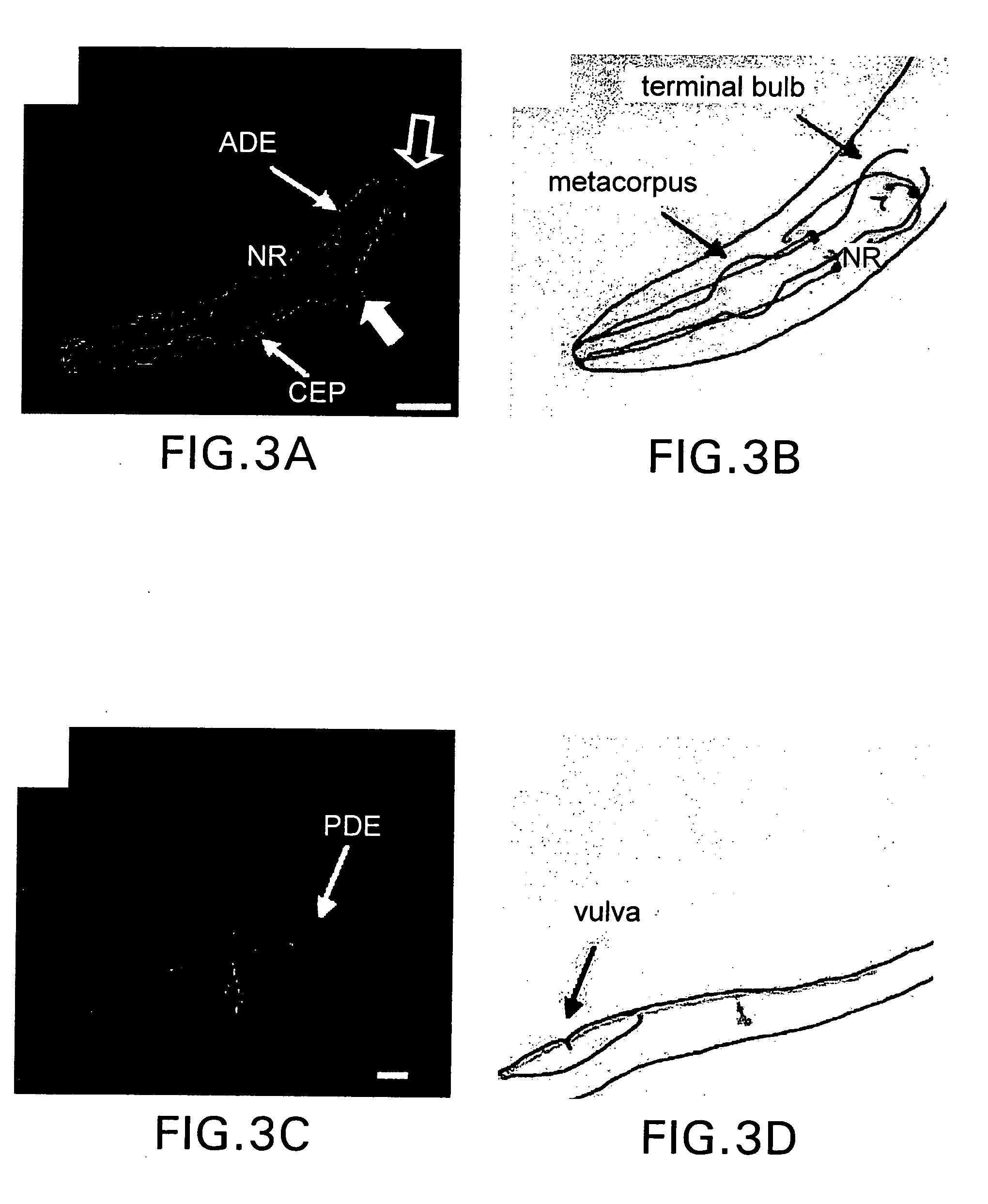Assay for toxin induced neuronal degeneration and viability in C. elegans
a toxin-induced neuronal degeneration and viability technology, applied in the field of neurodegenerative diseases, can solve the problems of inability to use a marker such as -galactosidase, and inability to observe other animals, so as to overcome deficiencies, be useful for studying, and be effective.
- Summary
- Abstract
- Description
- Claims
- Application Information
AI Technical Summary
Benefits of technology
Problems solved by technology
Method used
Image
Examples
example 1
Construction of Recombinant C. elegans Expressing Detectable Markers Methods
[0159] Strains and Maintenance
[0160]C. elegans strains were cultured on either OP-50 or NA-22 at 22.5° C. according to standard methods (Brenner, 1994). The N2 Bristol strain is the wild-type strain and can be obtained from the Caenorhabditis Genetics Center (University of Minnesota, Minneapolis, Minn.).
[0161] Plasmid Construction
[0162] The DAT-1 transcriptional GFP fusion (Pdat-1::GFP) was created by PCR amplification of the DAT-1 regulatory region in cosmid T23G5.5. The amplified product immediately upstream of the initiating codon ATG was digested with HindIII and BamHI, and the resultant 0.7 kb fragment was cloned into the HindIII and BamHI sites of the GFP reporter vector pPD95.73 (gift from Andy Fire), to create the construct called pRN200.
[0163] Germline Transformation
[0164] Transgenic animals were generated as previously described (Mello et al., 1991; Mello and Fire, 1995). Transgenic animals c...
example 2
Screening for Modulators of DAT
[0169] For the genetic and pharmacological evaluation of DAT and genes involved in altered DA neurotransmission, the C. elegans dopamine transporter (CeDAT) was cloned as described in Jayanthi et al., 1998, incorporated herein by reference.
[0170] Following the initial observation that a genomic fragment comprising the CeDAT gene (2.1 kilobase pair fragment upstream of the start ATG to 0.7 kb downstream of the ATG) was sufficient to drive reporter expression in DA cell bodies (T. Ishihara, personal communication; See 1. Hope, worn expression pattern for gene T23G5.5 (http: / bgypc086.leeds.ac.uk), an integrated transgenic line expressing a CeDAT promotor-GFP fusion (PCeDAT::GFP) containing 717 bp immediately upstream of the start ATG was created. This line displays intense GFP expression in all eight DA neurons within the hermaphrodite, but is not evident in other cells (FIG. 1). The axons and dendrites in these transgenic animals are clearly visible an...
PUM
| Property | Measurement | Unit |
|---|---|---|
| size | aaaaa | aaaaa |
| green fluorescent | aaaaa | aaaaa |
| yellow fluorescent | aaaaa | aaaaa |
Abstract
Description
Claims
Application Information
 Login to View More
Login to View More - R&D
- Intellectual Property
- Life Sciences
- Materials
- Tech Scout
- Unparalleled Data Quality
- Higher Quality Content
- 60% Fewer Hallucinations
Browse by: Latest US Patents, China's latest patents, Technical Efficacy Thesaurus, Application Domain, Technology Topic, Popular Technical Reports.
© 2025 PatSnap. All rights reserved.Legal|Privacy policy|Modern Slavery Act Transparency Statement|Sitemap|About US| Contact US: help@patsnap.com



